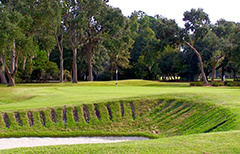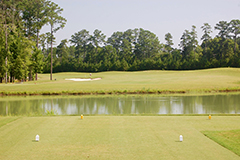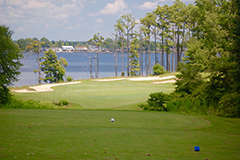

|
||||||||||||

|
||||||||||||

|
||||||||||||

|
||||||||||||

Low Cost of Living Towns In The South
|
||||||||||||||||||||||||||||||||||||||||||||||||||||||||||||||||||
| Wallace, NC River Landing |
- 12% |
| New Bern, NC Carolina Colours |
- 13% |
| Greenvile, NC Cypress Landing |
- 14% |
| McCormick, SC Savannah Lakes Village |
- 13% |
| Aiken, SC Woodside Plantation Cedar Creek |
- 18% |
| Greenwood, SC Stoney Point Grand Harbor |
- 16% |
| Georgetown, SC DeBordieu Colony |
- 10% |
| Savannah, GA The Landings on Skidaway Island Ford Planatation Savannah Quarters |
- 18% |
| Jacksonville, FL Queens Harbour North Hampton Amelia Island |
-11% |
| North Port, FL Bobcat Trail Sabal Trace Heron Creek |
- 10% |
Cost of Living comparisons from BestPlaces.net
If you would like more information on any golf communities, please contact me.
The nattering nabobs of golf’s imminent death cite evidence that, at best, is flimsy and, at worst deceitful. About the only thing they get right is that the total number of golfers and number of rounds played in the U.S. is down in recent years. But that’s like saying that because the Chicago Cubs haven’t won the World Series since 1908, they will never win. Go Cubbies!
The mainstream media -– and this includes both the business and sports media -– enjoy building up enthusiastically any institutions or public figures that offer easy story lines, only to become bored after a few months -- sometimes a few weeks -- with the icons they’ve helped make, after which they turn on them with equal zeal. Look no farther than one Donald J. Trump, who has commanded almost 24x7 coverage since his provocative (some would say racist) comments about immigrants and his opponents (some would say sexist). Television has covered his every self-aggrandizing campaign speech in the hopes that he would say something ever more outrageous, as if provocation is the only news worth delivering. The major media served as Trump’s tools, a point he himself makes when he looks out to his live audiences (and the CNN camera) and mocks, “See, the major networks are here!”
Golf, unlike the Donald, is a quiet game based on honor and positive gestures toward one’s competitor. (“That putt’s good,” not “Can you imagine that [Carly Fiorina], the face of our next President?”) Today, just a few months after headlines regaling his ascendancy, the headlines read “Polls Narrow Trump’s Leads” and similarly pessimistic headings, and the articles that follow imply he is fading fast, although he still leads his nearest Republican competitor by double digits. The issue here isn’t about accuracy in reporting; it’s about amount of coverage and emphasis.
Up until the numbers of those playing golf began to slip, a clear consequence of the hangover of the 2008 recession, the worst thing the media had to say about the sport of golf was that it was a rich white man’s game. But then Tiger Woods emerged on the scene, a great myth-exploding story if ever there was one, and golf was no longer a rich white man’s game. The perception positioned it as a game that anyone could play, and the media published such positive stories as First Tee’s attempts to open the game to city kids and minorities. (Since its founding in 1997, First Tee has reached 10.5 million young people and 4 million in 2014 alone.) But, after a while, such positive news requires creativity and enthusiasm to make it fresh and interesting and, let’s face it, do journalists really want to work that hard when stories like Donald Trump, missing Malaysian airplanes or Tiger Woods’ infidelities are dumped in their laps?
I have to chuckle when journalists cite the time it takes to play golf as a major contributor to the game’s eroding popularity. Parents can’t play golf on Saturdays anymore, the golf deniers write, because their kids are playing soccer. And yet somehow roughly 50,000 people on average at a Division 1 college football game on a Saturday afternoon manage to rip themselves away from their weekend responsibilities for about as much time as it takes to play a round of golf (figuring the time to enter and leave the stadium and travel time to and from home; the stadium is likely to be farther from their house than is their local golf course). A few of those college games take more than four hours to watch –- and aren’t all that competitive. And YOU ARE WATCHING, NOT PLAYING! How much fun is that? That the time it takes to play a round of golf is at the core of golf’s problem is a shibboleth, and the golf industry should stop apologizing for it (see below).
The “golf is too expensive” mantra is equally overstated. Even if a good set of golf clubs costs $1,000 –- many good sets are available for much less –- most golfers keep their clubs for an average five years or more, making the annual cost of equipment, balls aside, $200 or less. (Play 50 rounds of golf per year, and that cost adds up to just $4 per round.) Skiers swap out their equipment on the same or more frequent schedule. And for a day of skiing, you may very well drive up to a couple of hours each way from home to the slopes, often wait in lines to get on the lifts that take you to the top of the mountain, and then make a run down the mountain that might take 10 minutes –- before repeating the process a few more times. And if you want to ski two days in a row, you bear the extra expense of lodging nearby. When was the last time you read an article in the business or sports media about the death of skiing as a result of its expense and time consumption (although, in fairness, we have seen the “rich white man’s sport” theme applied by the media to skiing)?
Golf is not dying. The explosion of leisure residential communities built from the late 1980s is largely responsible for the nation’s over-supply of golf courses. It was inevitable that, in the wake of a major recession, some would not survive. The closures will continue for a few years, but it is likely the number of courses and number of golfers will reach equilibrium in the next decade, fueled by a renewed interest among junior golfers. (Although a few new golf communities will open to accommodate 20 additional years of baby boomer migration to warmer climates.) The current crop of young, appealing professional golfers (Spieth, Fowler, McIlroy) are likely to help turn many would-be soccer players into regular junior golfers and, later, into lifelong golfers. (What golfing dad would rather jump up and down on the sidelines than follow his child around a golf course?) There are signs this is already happening: For example, in just its first three years, the PGA-sponsored Junior League Golf has expanded 345% to 9,000 participants; not many, but a start.
The golf industry has to play its part –- Taylor Made, for example, is supporting PGA Junior League Golf -– with creative marketing plans that don’t apologize for golf, such as the ill-conceived “While We’re Young” television campaign that encouraged golfers to speed up the game but implied for non-golfers they could expect a long day on the course if they took up the game. (Seriously, does cutting two minutes off each hole really make a difference?) Does Jack Nicklaus’ argument for 12-hole courses really move the ball down the fairway by trashing more than 100 years of tradition and history? Soccer has a scoring problem in the U.S.; is anyone suggesting we widen the goals?
Those who speak for golf must act smarter. Last year, Donald Trump, who owns a portfolio of upscale clubs around the world, said that, “in the U.S., golf is doing really, really well.” Lying about the state of golf is not helpful.
Golf isn’t doing really, really well. But neither is it on life support. Creativity and enthusiasm are what the doctor orders.
 DeBordieu Colony, Georgetown, SC DeBordieu Colony, Georgetown, SC |
 Grand Harbor, Ninety-Six, SC Grand Harbor, Ninety-Six, SC |
 Carolina Colours, New Bern, NC Carolina Colours, New Bern, NC |
 Cypress Landing, Chocowinity, NC Cypress Landing, Chocowinity, NC |
Larry Gavrich
Founder & Editor
Home On The Course, LLC
Read my Blog

Low Cost of Living Towns In The South
|
||||||||||||||||||||||||||||||||||||||||||||||||||||||||||||||||||
| Wallace, NC River Landing |
- 12% |
| New Bern, NC Carolina Colours |
- 13% |
| Greenvile, NC Cypress Landing |
- 14% |
| McCormick, SC Savannah Lakes Village |
- 13% |
| Aiken, SC Woodside Plantation Cedar Creek |
- 18% |
| Greenwood, SC Stoney Point Grand Harbor |
- 16% |
| Georgetown, SC DeBordieu Colony |
- 10% |
| Savannah, GA The Landings on Skidaway Island Ford Planatation Savannah Quarters |
- 18% |
| Jacksonville, FL Queens Harbour North Hampton Amelia Island |
-11% |
| North Port, FL Bobcat Trail Sabal Trace Heron Creek |
- 10% |
Cost of Living comparisons from BestPlaces.net
If you would like more information on any golf communities, please contact me.
The nattering nabobs of golf’s imminent death cite evidence that, at best, is flimsy and, at worst deceitful. About the only thing they get right is that the total number of golfers and number of rounds played in the U.S. is down in recent years. But that’s like saying that because the Chicago Cubs haven’t won the World Series since 1908, they will never win. Go Cubbies!
The mainstream media -– and this includes both the business and sports media -– enjoy building up enthusiastically any institutions or public figures that offer easy story lines, only to become bored after a few months -- sometimes a few weeks -- with the icons they’ve helped make, after which they turn on them with equal zeal. Look no farther than one Donald J. Trump, who has commanded almost 24x7 coverage since his provocative (some would say racist) comments about immigrants and his opponents (some would say sexist). Television has covered his every self-aggrandizing campaign speech in the hopes that he would say something ever more outrageous, as if provocation is the only news worth delivering. The major media served as Trump’s tools, a point he himself makes when he looks out to his live audiences (and the CNN camera) and mocks, “See, the major networks are here!”
Golf, unlike the Donald, is a quiet game based on honor and positive gestures toward one’s competitor. (“That putt’s good,” not “Can you imagine that [Carly Fiorina], the face of our next President?”) Today, just a few months after headlines regaling his ascendancy, the headlines read “Polls Narrow Trump’s Leads” and similarly pessimistic headings, and the articles that follow imply he is fading fast, although he still leads his nearest Republican competitor by double digits. The issue here isn’t about accuracy in reporting; it’s about amount of coverage and emphasis.
Up until the numbers of those playing golf began to slip, a clear consequence of the hangover of the 2008 recession, the worst thing the media had to say about the sport of golf was that it was a rich white man’s game. But then Tiger Woods emerged on the scene, a great myth-exploding story if ever there was one, and golf was no longer a rich white man’s game. The perception positioned it as a game that anyone could play, and the media published such positive stories as First Tee’s attempts to open the game to city kids and minorities. (Since its founding in 1997, First Tee has reached 10.5 million young people and 4 million in 2014 alone.) But, after a while, such positive news requires creativity and enthusiasm to make it fresh and interesting and, let’s face it, do journalists really want to work that hard when stories like Donald Trump, missing Malaysian airplanes or Tiger Woods’ infidelities are dumped in their laps?
I have to chuckle when journalists cite the time it takes to play golf as a major contributor to the game’s eroding popularity. Parents can’t play golf on Saturdays anymore, the golf deniers write, because their kids are playing soccer. And yet somehow roughly 50,000 people on average at a Division 1 college football game on a Saturday afternoon manage to rip themselves away from their weekend responsibilities for about as much time as it takes to play a round of golf (figuring the time to enter and leave the stadium and travel time to and from home; the stadium is likely to be farther from their house than is their local golf course). A few of those college games take more than four hours to watch –- and aren’t all that competitive. And YOU ARE WATCHING, NOT PLAYING! How much fun is that? That the time it takes to play a round of golf is at the core of golf’s problem is a shibboleth, and the golf industry should stop apologizing for it (see below).
The “golf is too expensive” mantra is equally overstated. Even if a good set of golf clubs costs $1,000 –- many good sets are available for much less –- most golfers keep their clubs for an average five years or more, making the annual cost of equipment, balls aside, $200 or less. (Play 50 rounds of golf per year, and that cost adds up to just $4 per round.) Skiers swap out their equipment on the same or more frequent schedule. And for a day of skiing, you may very well drive up to a couple of hours each way from home to the slopes, often wait in lines to get on the lifts that take you to the top of the mountain, and then make a run down the mountain that might take 10 minutes –- before repeating the process a few more times. And if you want to ski two days in a row, you bear the extra expense of lodging nearby. When was the last time you read an article in the business or sports media about the death of skiing as a result of its expense and time consumption (although, in fairness, we have seen the “rich white man’s sport” theme applied by the media to skiing)?
Golf is not dying. The explosion of leisure residential communities built from the late 1980s is largely responsible for the nation’s over-supply of golf courses. It was inevitable that, in the wake of a major recession, some would not survive. The closures will continue for a few years, but it is likely the number of courses and number of golfers will reach equilibrium in the next decade, fueled by a renewed interest among junior golfers. (Although a few new golf communities will open to accommodate 20 additional years of baby boomer migration to warmer climates.) The current crop of young, appealing professional golfers (Spieth, Fowler, McIlroy) are likely to help turn many would-be soccer players into regular junior golfers and, later, into lifelong golfers. (What golfing dad would rather jump up and down on the sidelines than follow his child around a golf course?) There are signs this is already happening: For example, in just its first three years, the PGA-sponsored Junior League Golf has expanded 345% to 9,000 participants; not many, but a start.
The golf industry has to play its part –- Taylor Made, for example, is supporting PGA Junior League Golf -– with creative marketing plans that don’t apologize for golf, such as the ill-conceived “While We’re Young” television campaign that encouraged golfers to speed up the game but implied for non-golfers they could expect a long day on the course if they took up the game. (Seriously, does cutting two minutes off each hole really make a difference?) Does Jack Nicklaus’ argument for 12-hole courses really move the ball down the fairway by trashing more than 100 years of tradition and history? Soccer has a scoring problem in the U.S.; is anyone suggesting we widen the goals?
Those who speak for golf must act smarter. Last year, Donald Trump, who owns a portfolio of upscale clubs around the world, said that, “in the U.S., golf is doing really, really well.” Lying about the state of golf is not helpful.
Golf isn’t doing really, really well. But neither is it on life support. Creativity and enthusiasm are what the doctor orders.
 DeBordieu Colony, Georgetown, SC DeBordieu Colony, Georgetown, SC |
 Grand Harbor, Ninety-Six, SC Grand Harbor, Ninety-Six, SC |
 Carolina Colours, New Bern, NC Carolina Colours, New Bern, NC |
 Cypress Landing, Chocowinity, NC Cypress Landing, Chocowinity, NC |
Larry Gavrich
Founder & Editor
Home On The Course, LLC
Read my Blog

|
||||||||||||

|
||||||||||||

|
||||||||||||

|
||||||||||||

|
||||||||||||

|
||||||||||||
|
||||||||||||
|
||||||||||||
|
||||||||||||
|
||||||||||||
|
||||||||||||
Read my Blog
|
||||||||||||
|
||||||||||||
|
||||||||||||
|
||||||||||||
|
||||||||||||
|
||||||||||||
Page 1 of 2